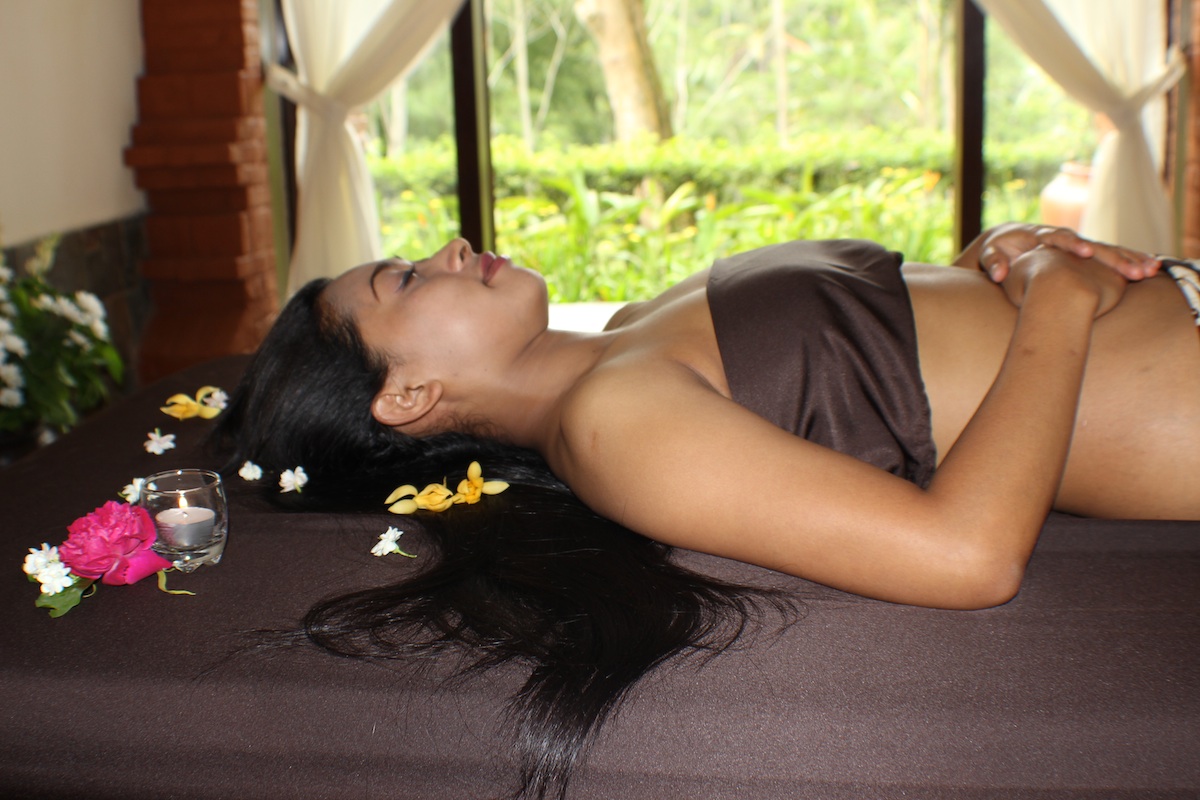
Have you ever walked out of a spa wishing you could always feel that good?
While there were no “spas” in the ancient times when Ayurveda was revealed to Rishis (sages) living in the Himalayas and faraway forests of India, these Rishis have discovered an incredible daily ritual to make you feel like every day is a spa day—regardless of your annual income.
Though many people may only associate the word “Ayurveda” with fancy, expensive spa treatments, Ayurveda is actually a complete medical science of life. The word “Ayurveda” derives from the Sanskrit words “Ayush,” which means “life” and “Veda,” which means “knowledge of.”
And the beauty of Ayurveda’s wisdom is that it truly touches upon every aspect of life. From psychology to managing difficult diseases like psoriasis, to practical home remedies, to seasonal, dietary and lifestyle recommendations to prevent diseases, to guidance on how to attain the ultimate spiritual goal of Self—Realization, Ayurveda offers health solutions at every level: body, mind and soul.
Abhyanga: A Powerful Disease Prevention Tool
There is an entire sub—branch of Ayurveda called Svasthavritta, which specializes in health consciousness, and teaches many spa—like rejuvenating self—care practices to help people actively increase their health and prevent disease.
I feel so fortunate I have learned Svasthavritta practices, and it is now a joy to teach them to beginner Ayurveda students. One of the first daily health rituals I teach as part of dinacharya (Ayurveda’s recommended daily routine to live in harmony with nature) is the practice of self—massage.
The term for Ayurvedic self—massage is “Abhyanga,” a beautiful Sanskrit word that is comprised of the word “Aba,” meaning “glow” and “Anga,” which means “limbs.” Abhyanga literally brings a glow to our skin, reflecting the ever—glowing, shining nature of our indwelling spirits.
The Benefits of Abhyanga
An ancient Ayurvedic medical text called Ashtanga Hrdaya describes the manifold benefits of Abhyanga. Chapter Two, Verses eight through nine of Ashtanga Hrdaya Sutrasthana reveals:
“The advantages of the oil massage are that it wards off old age symptoms and exertion, bestows good vision, provides nourishment to the body, equips one with a long life, good sleep and healthy skin.”
The daily practice of Abhyanga also has a powerful effect of mitigating what is known in Ayurveda as the Vata Dosha, a state of matter consisting of air and ether elements. Vata Dosha is what goes out of balance in us when we feel stressed, don’t sleep enough, skip meals, travel or exercise excessively. In addition to its physical health benefits, Abhyanga has the added power of calming the mind, by calming Vata Dosha.
Having had deep Vata Dosha imbalances when I first encountered Ayurveda, I can definitely attest to the degree of stability, grounding, strength and calmness I feel when doing Abhyanga. Since I have been doing Abhyanga, my joints also crack much less and my skin is clearer. When I was a teenager, people used to think I was in my 20s. Now that I am in my 20s, people are asking me if I am in my teenage years. I truly feel like my own bathroom has become like a magical spa, and my oil supply like a fountain of youth I have been fortunate to discover while I am still in my youth.
How To Do Abhyanga
1. Purchase organic sesame and/or coconut oil from a health food store. Sesame oil is best in winter and spring and coconut oil in the summer and early fall seasons.
2. Pour the oil into a small bowl, which can be placed inside a pot of boiling water to warm it. (Another option is to place a small bowl of oil into a mini, lunch—sized crock pot to warm up.)
3. Once the oil is warm, sit on a towel and start by rubbing oil onto the bottoms of your feet.
4. Work your way up, from your feet to your calves, knees, thighs, hips, lower back, abdomen, chest, hands, arms, neck, etc. (but not on the face).
5. When you are oiling longer bones, move in upward and downward strokes. When oiling your joints, rub in a circular motion.
6. Spend some time oiling each part of your body, giving extra attention to any area that is particularly prone to pain and cracking. You can close your eyes while applying the oil if you like.
7. Take a shower with warm to hot water, which will allow your body to more fully absorb the oil.
8. Instead of using regular soap, which can dry out the skin, you can grind green mung lentils into flour in a blender and use this instead to scrub your body as you shower.
When To Do Abhyanga
1. On an empty stomach
2. Ideally after you have eliminated your bowels in the morning
3. Before you eat dinner in the evening
4. Especially important to do during the hot, dry months of summer and the cold winter season
5. Try to oil yourself daily, or at least three times per week
Abhyanga Contraindications
1. Never apply oil when you have active indigestion, fever, diarrhea, colds, coughs, flu, etc.
2. Do not do Abhyanga when menstruating
3. Avoid Abhyanga when raining or cloudy
4. No oiling wounds or rashes
If none of the above contraindications apply, the practice of Abhyanga will deeply benefit osteoporosis and other joint—related aches and pains as we age. Another word for oiling in Sanskrit is “Sneha,” which means “to love.”
John Lennon once proclaimed that “All we need is love.” Most of us love to receive love, but this desire can often lead to feeling unloved by others.
One of the most powerful lessons I have learned from my Ayurveda studies is the practice of not wishing so much to be in love or to receive love, but to actually be love itself. Being love begins with loving ourselves, and Abhyanga is one of the best ways I’ve learned to do that, in a practical way, every day.
Start practicing self—love today with Abhyanga and you, too, will start to feel like every day is a spa day, thanks to the power of Ayurveda.
Love elephant and want to go steady?
Sign up for our (curated) daily and weekly newsletters!
Editorial Assistant: Kathryn Muyskens / Editor: Rachel Nussbaum
Photo: elephant journal archives


 Share on bsky
Share on bsky




Read 1 comment and reply